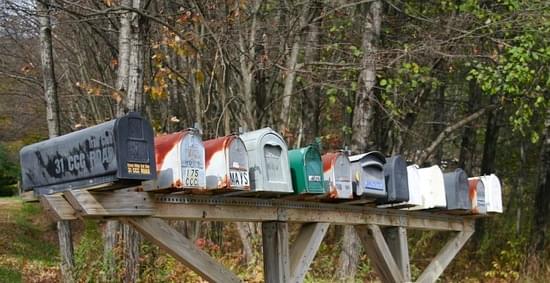Why you should delete email subscribers
You can have an amazingly designed email newsletter that’s also optimised for mobile, you can A/B test your subject lines and experiment with different calls to actions… but the long and short of it is this: if your mailing list is not maintained correctly, your campaigns may never make it to the inbox to get opened and acted upon.
Why? It’s all due to the quality of your email list. When was the last time you deleted subscribers from your database?
If a big chunk of people haven’t opened any of your emails in the last year or more, should you keep them in your list considering that:
- It’s costing you money to have those email addresses in your list and to send them your content?
- It’s reducing your open rates and possibly preventing interested subscribers from receiving your emails?
Why pay for subscribers who are no longer interested in your business or what you have to say? Why keep them in your list if the chances of them opening your emails are slim to none?
If email marketing is responsible for the greatest chunk of your revenue and the thought of performing major surgery on your cash cow worries you, we’re here to help.
In this post we’ll explain why it’s important to clean up your mailing list regularly, and how keeping inactive subscribers can negatively impact your email marketing results. We’ll also share the steps to take to remove inactive subscribers the right way, without having to worry that this action will halve your business revenue.
But first…
Which subscribers should you delete?
If you’ve been hard at work building your list for a year or more, you probably have subscribers who haven’t opened or clicked on an email from you in months. They might be deleting your emails without opening or reading them at all, or they might even be sending your emails directly to a filtered folder that they almost never revisit.
These subscribers are known as “inactive subscribers”. And if you’re wondering why they became “inactive”, here are a few possible reasons:
They may have opted in for the wrong reasons. Maybe they gave you their email address to get access to a discount or to download a free e-book. But now, even if they’re no longer interested in hearing from you, they never really bother to unsubscribe. They just delete your emails without even opening them.
They’re no longer interested in your business or emails. It’s common for people to change their interests with time. You may have helped them with a certain challenge or problem in the past but a year later they might have moved to another country, changed their career or shopping habits. They no longer want or need you, and there’s nothing you can do about it.
You’re not segmenting your list. If you don’t organise your list based on interests, challenges, or other factors, and if you’re sending the same email to everyone in your list, you’re likely to have a low engagement rate with your subscribers. This will also happen if you put them in the wrong segment when they’re not really interested in the topic you’re covering. Over time they will stop opening your emails.
Your email goes directly into the SPAM folder. This means that your subscribers never get to see them and read your content. This can happen when you’re using SPAM trigger words like “£££”, “cheap”, “save up to”, “no fees”, etc; when you’re sending attachments or using link shorteners in your emails. So pay attention to these when sending your emails.
They changed their email address. They may have changed jobs, switched from a free email to a custom domain. In this case there isn’t much you can do to get them back to your list. All you can do is hope that they like your content so much that they’ll subscribe to your list using their new email address.
Why is it so important to remove inactive subscribers from your list?
There are many reasons why you should delete inactive email subscribers, and here are the most important ones:
Decrease costs
Having a big email list may be something you’re proud of. If you sell training courses it sounds a lot better to say you have 5,000 students enrolled as proof of your skills. If you see a blog with 20K subscribers, you can’t help but think there must be something good about this blog if so many people follow it, right?
But here’s the problem – the bigger your email list, the more you’ll have to pay to your email service provider. And having a huge list of inactive subscribers who will never again interact or buy from you can cost you a lot. Wouldn’t you rather use that hard-earned money to build your list with quality subscribers that you can then convert into customers?
Also ask yourself – wouldn’t you rather have a list of 1,000 people who open every email you send than 20K who mostly don’t open your emails and just send your content to their spam folder? You can make more money with those 1,000 engaged subscribers than with a non-engaged list of 20K.
Increase email deliverability
Having lots of inactive subscribers can seriously hurt the deliverability of your emails. Here’s why: email and Internet Service Providers are becoming increasingly savvy to the type of content people want to see in their inboxes. In their ongoing battle against spam, they track and quantify the number of emails opened, the number of unsubscribes, and general inactivity so they can determine whether you’re a spammer or not.
So, if they see that a big percentage of your subscribers are not opening your emails, then they’re more likely to just flag all your emails as spam. This means your IP reputation will decrease, resulting in lower deliverability and even fewer emails actually reaching perfectly valid, interested subscribers. Not good!
A clean list means you have a better chance of getting your emails delivered. Even if you do deliver on what you promised, subscribers can change their behaviours in time, and formally engaged people can become uninterested in what you have to say. This can hurt your list’s overall performance, which is why it’s so important to keep tabs on your mailing list and ensure it’s clean.
Increase engagement
Delete those who continuously ignore your emails and watch your engagement rate go up. Opens, clicks and deliverability will yield higher percentages when you weed out the inactive audience and hone in on those who are truly interested in your content.
The truth is that engaged subscribers are the only ones you should care about, as they’re the only ones who really matter. They are the ones who open your emails, click on your links, visit your site and ultimately buy from you.
So, it’s those email subscribers who are paying attention to you and acting on what you say that matter, and not the size of your list.
The moral is simple: a small yet engaged readership is far better than a big yet disconnected list of subscribers.
How to monitor engagement levels
So how do you manage engagement? Here are a few metrics you should pay attention to:
- Open rate – This is the percentage of recipients who opened your email.
- Clickthrough rate – Refers to the percentage of recipients who clicked on one or more links in your email.
- Conversion rate – The percentage of recipients who clicked on a link within your email and completed a desired action, such as filling out a form or buying a product.
- Email sharing rate – The percentage of recipients who clicked on a “share this” button to share your email to a social network, and/or who clicked on “forward to a friend” button.
While opens and clicks are your most essential metrics, there is plenty of other data you can look at to determine engagement levels. With every campaign you send, you’re able to gather more information about your subscribers, their behaviour and interests, and what’s actually driving engagement.
Check your campaign reports regularly and look closely at the changes in your engagement rates over time. If engagement is rising, it may well be because you’re sharing valuable content that your audience is very interested in, or because your subject line is enticing. If you’re getting lots of clicks, look at your calls to action to see whether the button design or copy might be boosting engagement. If your engagement is dropping, try reducing the number of emails or send them on different days of the week or at different times to see what works best for you.
The key steps to cleaning up an email list the right way
Here are the steps you need to follow to successfully clean up your mailing list.
Step 1: Get rid of all bad addresses and those who have unsubscribed
Check your mailing list for “hard bounces”. These include email addresses who are no longer valid or recipients who have blocked your email address. Once you have all these bad addresses, don’t think twice about deleting all of them from your list.
Next you should remove everyone who opted out of your list or marked your address as spam. Some email providers update your list automatically when a user unsubscribes.
However, there are also providers who don’t take care of this for you so you’ll have to do this manually. Make sure to check with your email provider to see if this feature is included in their solution.
Step 2: Run a re-engagement campaign
Before you take the final step to remove all inactive subscribers from your list, we recommend giving it one last shot to ensure they really are a lost cause and will never engage with your emails again.
Here’s how to do it:
2.1. Identify inactive subscribers
You should count as inactive subscribers those who haven’t opened a single email from you in over a year. To identify them, look at:
- When they first subscribed to your list
- When they last opened one of your emails
2.2. Create a new segment for inactive subscribers
Once you’ve identified your inactive subscribers, make a separate list and save them as a new segment so you can then send them your re-engagement campaign. For example, with the 123 Reg Email Marketing tool you can easily create your “inactive subscribers” segment so you can then send them a final email asking if they’d like to remain on your list.
Check out this video tutorial to learn more about audience segmentation and how to use it with our tool.
2.3. Create and run your re-engagement campaign
Try not to complicate things. Your re-engagement email should be as simple as “Would you like to stay on my mailing list?”.
Here is a great example from Grammarly:
The copy is short, to the point and also engaging. And one other thing I liked about this email is that they also added a paragraph just below the call to action to re-introduce themselves, just in case I forgot who they are:
Now, the chances are that the majority of your inactive subscribers won’t respond. But you might also be surprised to see that some will actually open your emails and re-engage (like I did with Grammarly).
2.4. Analyse results
After you’ve sent your re-engagement email, don’t start deleting people after 24 hours. Give them a chance to check their inbox and decide whether they’d like to stay or to forever disappear. They might be sick or on a vacation, or too busy doing other things. We suggest you wait a few days before you start deleting.
2.5. Delete, delete, delete
If your inactive subscribers don’t open your email and don’t take any action after a few days, it’s time to permanently delete them from your list.
It might be hard at first but once you’re done, you’ll feel relieved. Next time you send an email campaign check the results to see how much more engaged your list is. And isn’t that the goal?
How to attract high-quality sign ups to replace unengaged email list members
Now that you’ve deleted a (probably) big chunk of inactive subscribers, you might want to get to work and replace them with high quality ones. Here’s how to get started:
- Make your list irresistible. Let people know exactly what they’re signing up for and the type of amazing content they should expect to receive from you directly to their inbox.
- Spread the word about your awesome resources and offers on social media whenever relevant. Join conversation on Facebook, Twitter, Linkedin, or create your own groups where you share your tips and advice. Then when the time is right encourage people to join your email list so they get even more useful tips.
- Run a paid campaign on Twitter and/or Facebook and attract the right subscribers who are interested in your content and your business.
For more actionable tips on how to get more people to sign up to your email list, check out this guide.
Wrapping up
If you’re considering cleaning up your list (and you should), we hope you find our guide useful. And remember that a healthy email list is one that serves those who are truly interested in your content and your business.
When was the last time you cleaned up your mailing list? What else have you done to improve your mailing list and increase its performance? Tweet us @123reg.




